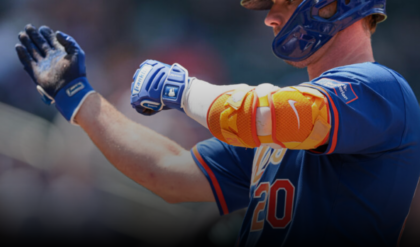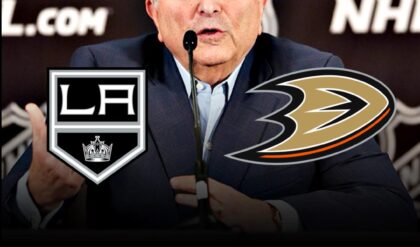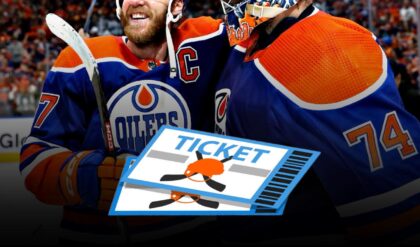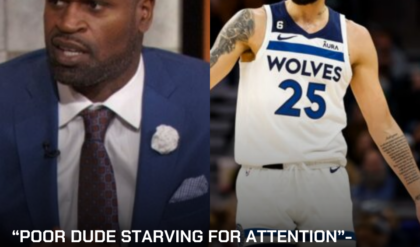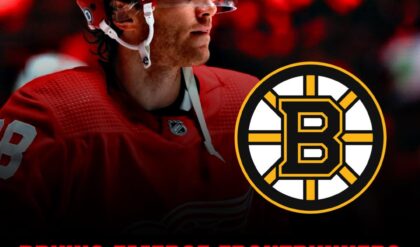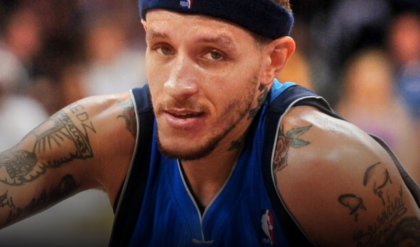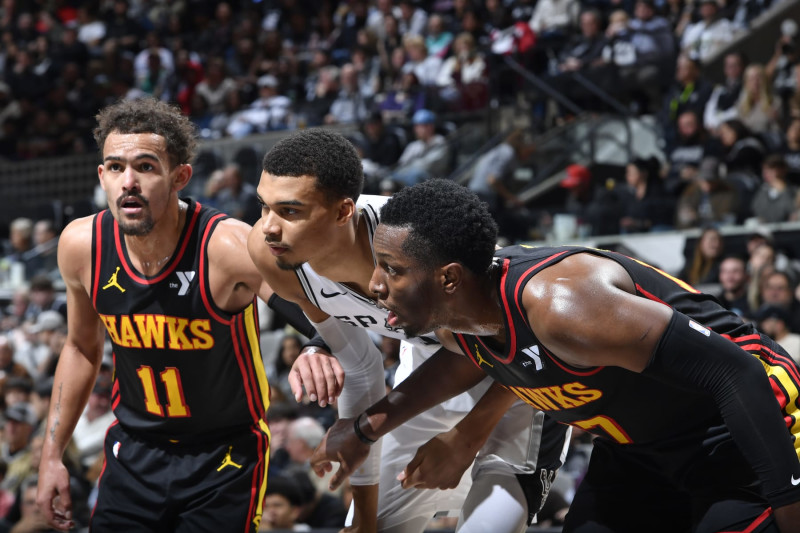
The San Antonio Spurs are done rebuilding. In landing Victor Wembanyama in the 2023 NBA draft, they brought in a true franchise player.
At 20 years old, the Frenchman is just scratching the surface of what he’ll become—and San Antonio’s front office needs to start adding the right complementary pieces around him.
The need for a point guard is glaring, and one possible target is Atlanta Hawks All-Star Trae Young.
As Howard Beck of The Ringer wrote in February, “one exec said Atlanta discussed a potential Young trade with San Antonio before last week’s deadline … It’s considered a near certainty that they will part with one, or both, this summer.”
Young’s height and frame (6’1″, 164 lbs) may be opposite of Wembanyama’s (7’4″, 210 lbs), but those differences may complement each other. Young—not a noted defender—needs a rim-protector, while Wembanyama would benefit from a playmaker getting him easier shots.
So, how might the Spurs add a 26.4 point-per-game scorer while appeasing the restructuring Hawks, and what third team can help make that happen?
Full Trade Scenario
1 OF 4
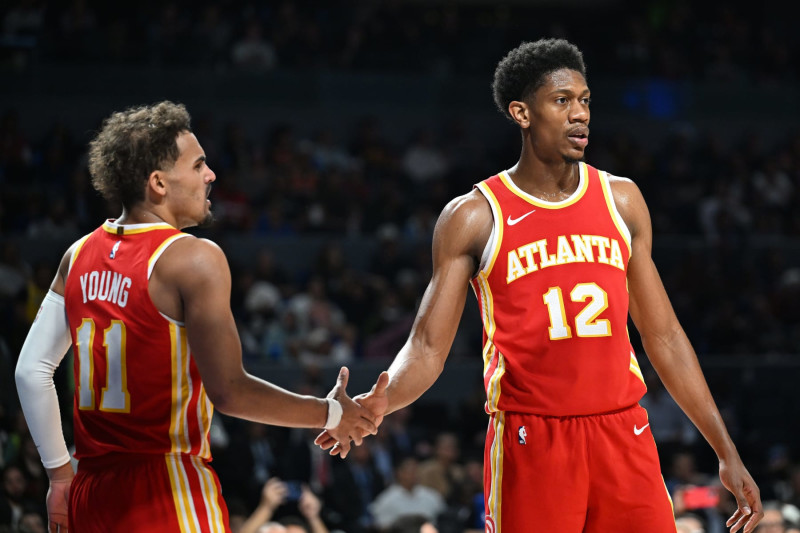
Adam Hagy/NBAE via Getty Images
Hawks get:
Tre Jones (via Spurs)
Devonte’ Graham (via Spurs)
2024 first-round pick (via Spurs)
2025 Hawks first-round pick (via Spurs)
2025 Hornets first-round pick (via Spurs)
2026 relinquished swap rights (via Spurs)
2027 Hawks first-round pick (via Spurs)
Lonzo Ball (via Chicago Bulls)
$21,696,429 trade exception (De’Andre Hunter)
$21,636,592 trade exception (Trae Young)
Bulls get:
De’Andre Hunter (via Hawks)
Sidy Cissoko (via Spurs)
$6.5 million trade exception (Jevon Carter)
Spurs get:
Trae Young (via Hawks)
Jevon Carter (via Bulls)
2024 Sacramento Kings first-round pick (via Hawks)
Note: The deal would be agreed to before the draft but executed on July 6, after the 2024-25 moratorium.
The Kings’ 2024 pick has lottery protection, but the assumption is that Sacramento makes it to the postseason.
The Hawks previously traded their 2025 and 2027 first-round picks to the Spurs for Dejounte Murray.
The Hornets’ 2025 pick is lottery-protected, otherwise conveying as second-rounders in 2026 and 2027.
Why the Atlanta Hawks Should Do It
2 OF 4
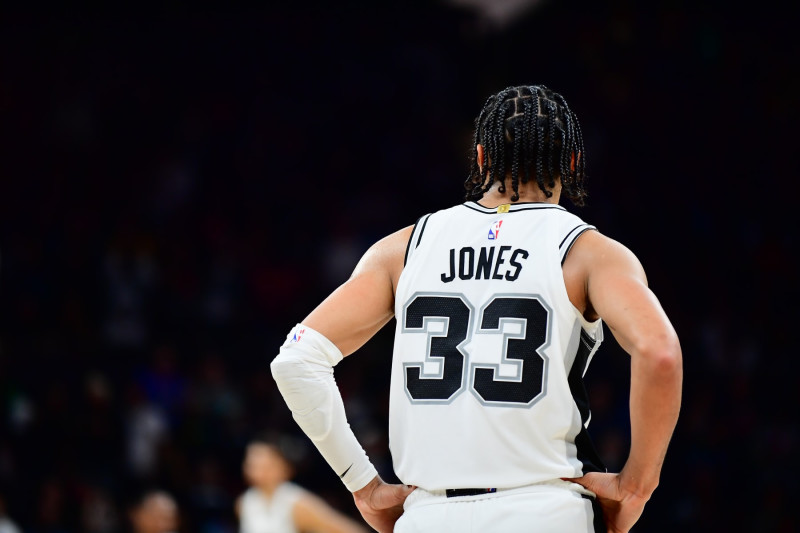
Photos by Michael Gonzales/NBAE via Getty Images
The Hawks just aren’t a good enough team as constructed. Going by Beck’s article and general buzz in NBA circles, Atlanta is believed to be seeking sizable change.
This deal is a significant cost-cutting move. They will eliminate Young’s $138 million over the next three seasons (the final year is a player option) and remove Hunter from their books (roughly $70 million).
Jones can back up Murray at a reasonable price ($9.1 million). Graham’s $12.7 million is only $2.9 million guaranteed and would be a waiver candidate (with Atlanta taking that hit all at once or stretching it out at $950,000 over three seasons). Ball hasn’t been healthy for the last few seasons and is strictly in the trade for salary-matching purposes.
More important than the players returning for Young, the Hawks get both first-round picks back from the Murray trade (plus extinguishing swap rights in 2026). Atlanta jumps from the Kings’ selection (around 20) to the Spurs’ top-five pick in 2024. The Hawks also get a future first from the Hornets, though that will probably convey as a pair of second-rounders.
Finally, Atlanta gains two massive trade exceptions by utilizing the expiring John Collins exception to take in Jones and Graham. Ball would come in from Chicago in exchange for Young (to San Antonio), yielding a $21.6 million trade exception. Hunter’s salary to the Bulls (without anyone in return) would generate one for $21.7 million.
The Hawks make significant changes to gain financial flexibility but still have talent on the roster to work with, such as Jalen Johnson, Onyeka Okongwu, Bogdan Bogdanović, Clint Capela, Murray and Jones.
Capela might be the next player to move, but that’s not San Antonio’s problem…
Why the Chicago Bulls Should Do It
3 OF 4
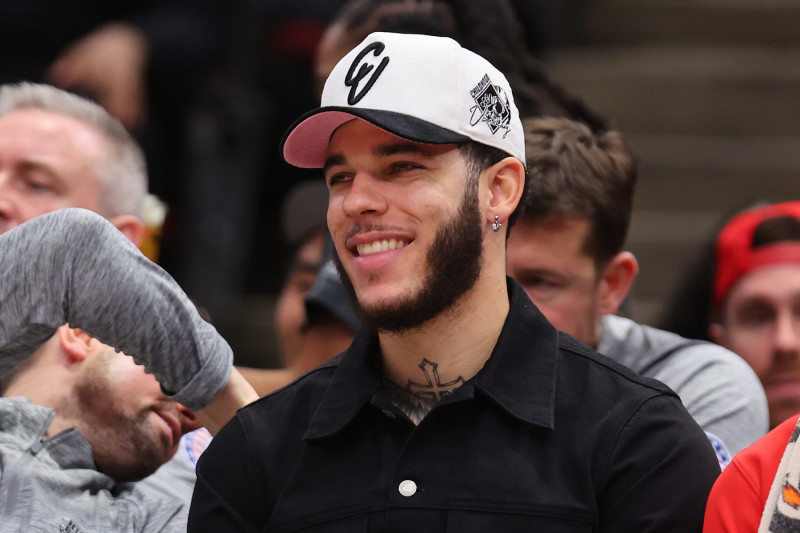
Michael Reaves/Getty Images
Many competing executives believe the Bulls should rebuild. Chicago, however, doesn’t seem to agree. With that in mind, how can the team improve on what has been neither an overwhelming nor underwhelming season?
As predicted by B/R, DeMar DeRozan may be the most likely player in the NBA to sign an extension before July. The Bulls also need to decide on the fate of Patrick Williams, who will be a restricted free agent this summer but is out for the year with a foot injury.
With Ball’s return ever doubtful, the Bulls would use his contract to bring in a starting-caliber forward in Hunter (averaging 15.4 points a game for Atlanta while shooting 41.1 percent from three-point range).
Hunter relieves the pressure on Chicago to overpay Williams. If a compromise can be worked out at the right figures for both Williams and DeRozan, the team should be able to avoid the luxury tax. Getting out of Carter’s $6.5 million (plus a $6.8 million player option for 2025-26) also helps keep the Bulls under that line.
Chicago’s willingness to take on Hunter’s multi-year deal helps the team improve without giving up draft compensation or rotation players (outside of Carter, who plays 13.8 minutes per game).
Why the San Antonio Spurs Should Do It
4 OF 4
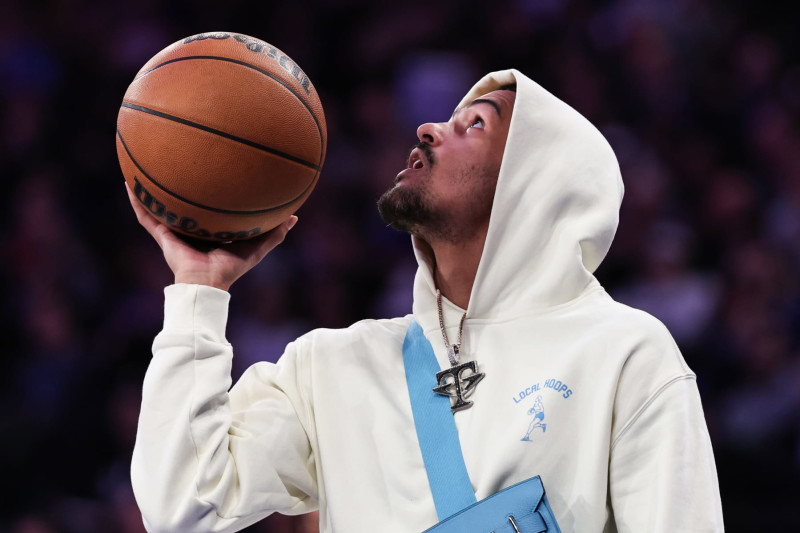
Dustin Satloff/Getty Images
It sounds like a lot—four first-round picks for Young—but the Spurs are essentially trading down, giving up two seconds (with the protections on the Hornets’ selection) and sending the Hawks back their picks for Murray.
From a point of view, San Antonio executes a delayed trade of Murray for Young, enabling the team to be awful enough in the interim to land Wembanyama.
The Spurs have collected several first-round picks through the rebuilding process, but Wembanyama changed the timeframe. Even this year, San Antonio may have a top-five pick, but can it find a player ready to help more than Young?
The general consensus in league circles is that the top of this draft (see B/R’s Jonathan Wasserman’s mock) may not turn around an immediate impact player. If the Hawks want to gamble and San Antonio can drop back to around 20, that’s a worthwhile price for an All-Star.
In terms of players, Jones is well-regarded by the Spurs, but the Young/Carter combination is a clear upgrade. Graham and Cissoko are expendable. San Antonio would execute the trade by using cap room to take in Young and the room mid-level exception to acquire Carter from the Bulls (a new rule in the 2023 collective bargaining agreement that starts this July).
The Spurs would waive Charles Bassey and renounce the rights to any free agents (Cedi Osman, Sandro Mamukelashvili, etc.). San Antonio would retain Julian Champagnie, whose $3 million salary is non-guaranteed.
Finally, if the Hawks want to haggle over picks, the Spurs also have future firsts from the Toronto Raptors (2024, top-7 protected), Bulls (2025, top-10 protected), Celtics (2028, top-1 protected) and Dallas Mavericks (2030, via unprotected swap).
